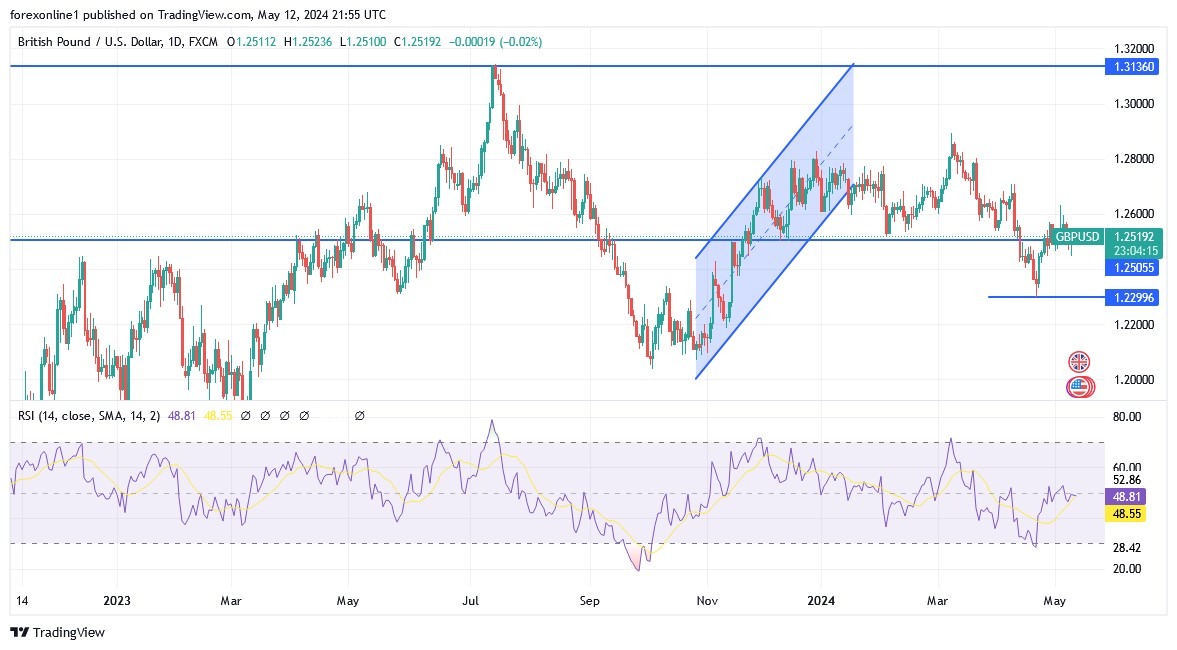- Last Friday concluded a busy week for UK markets with the release of Gross Domestic Product (GDP) data.
- This showed convincingly that Britain has turned away from the weakness seen at the end of last year to growth.
- The preliminary reading for the first quarter at 0.6% is impressive considering the technical recession that preceded it.
- The printing for the fourth quarter was concerning at -0.3%. As a result, the British pound against the US dollar (GBP/USD) remained stable at the psychological support level of 1.2500.

ING Bank had indicated that “higher real wages, the easing of the recent mortgage crisis and higher rates of economic migration have helped return the UK economy to growth.” The figure was 0.6%, better than the expected 0.4%, and puts Britain on a strong footing for 2024 when interest rate cuts are almost certain in light of the Bank of England's speech on Thursday. At the same time, the FTSE index once again recorded all-time highs while the price of the British pound remained stable despite the possibility of cuts. The euro against the pound remains at 0.86.
Overall, Britain's impressive GDP figure supports leading indicators such as purchasing managers' indexes that have already indicated that Britain will return to growth this year. So far, the strength should continue into the second quarter as there are many positive drivers. First, real wage growth should boost the economy. This happens when wages rise faster than inflation, which should be the case in the second quarter and beyond, as inflation is expected to fall near 2% while nominal wage growth rises to around 6%.
The only downside to this is that higher wage growth may limit Bank of England policy, especially if inflation bounces back as Governor Bailey warned last Thursday. The second positive wind blowing into the UK economy comes from the fading of the mortgage crisis. Disposable income should rise as a result.
Although the situation looks much better for 2024, it raises questions about why the Bank of England is rushing to cut interest rates. At a meeting last Thursday, Bailey said: “No interest rate cuts for banks in June have been ruled out or planned,” which certainly leaves the door open in both directions. However, the overall message was that they would respond to the data, and Bailey added: “There are two more versions of inflation before the June decision.” Thus, we can assume that if the CPI data is cold enough and shows moderation in services inflation, the interest rate will be cut in June. Therefore, this possibility may affect the British pound in May.
Top Forex Brokers
According to the results of the Economic Calendar data, it seems that the data in the United States and the United Kingdom are always moving in opposite directions. When Britain was suffering from a technical recession at the end of last year, the United States of America was strong, and now when the United Kingdom is returning to growth, American economic data has changed. There is no doubt that this situation is still far from recession levels, but signs of flexibility are accumulating. On Thursday, job claims reached 231,000, the highest weekly reading since August of last year. This adds to the negative trend with a weaker US jobs report and lower PMIs and GDP estimates.
Overall, the reaction in the US dollar and stock markets was clear. The Standard & Poor's 500 index rose to new highs in May, while the US dollar broke a three-day winning streak with a sharp decline. Moreover, markets see this as one reason for the Fed to cut interest rates sooner rather than later. Therefore, US CPI data is scheduled to be released this week and could make or break the Fed's policy perception and dollar weakness. As noted by ING Bank, a cut in September remains the most likely, but if inflation falls enough, July could be the focus.
Technical forecasts for the GBP/USD pair today:
As mentioned before, the stability of the British pound against the US dollar “GBP/USD” will remain around and below the support level of 1.2500, incentivizing bears to control the direction. Meanwhile, a real reversal of the overall downward trend won't occur without bullish movement towards resistance levels at 1.2775 and 1.2830 respectively. Technically, the GBP/USD exchange rate may continue to stay stable within narrow ranges with a downward bias until the reaction to the announcement of US inflation figures later this week.
Ready to trade our daily Forex analysis? Check out the best forex trading company in UK worth using.
